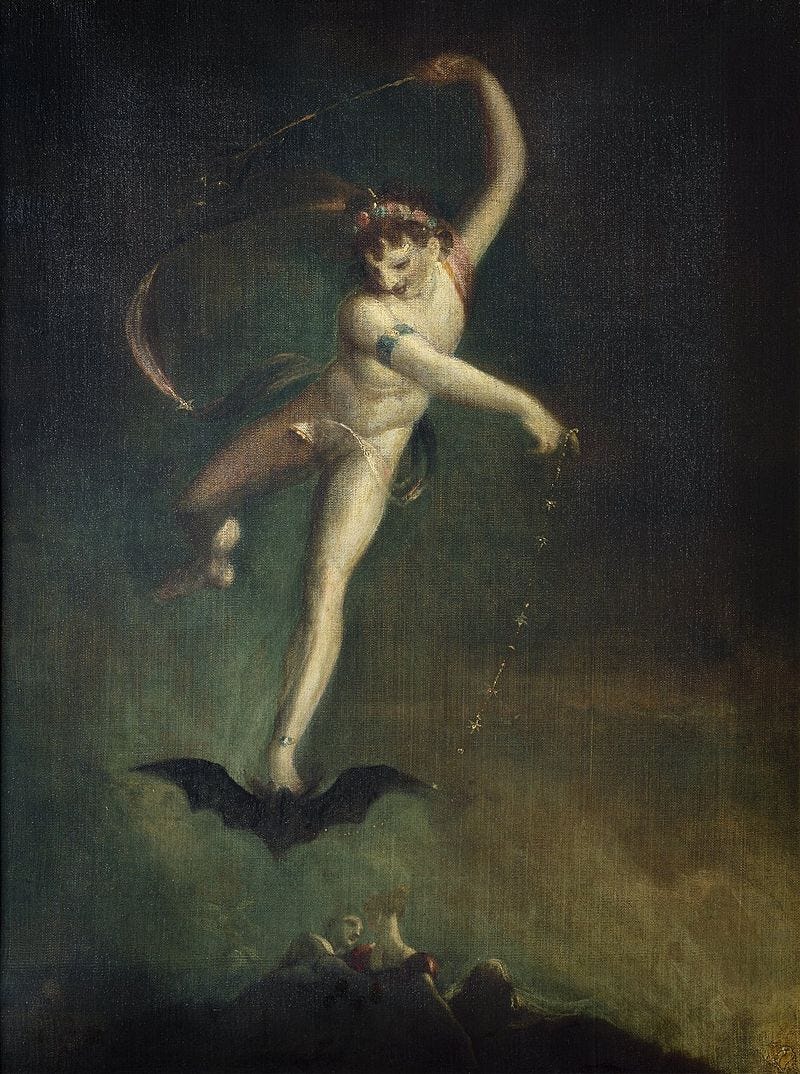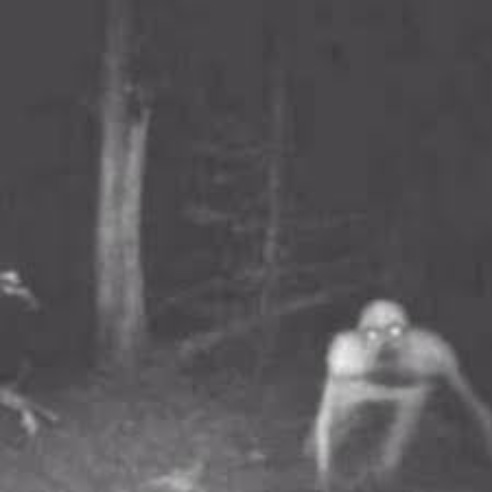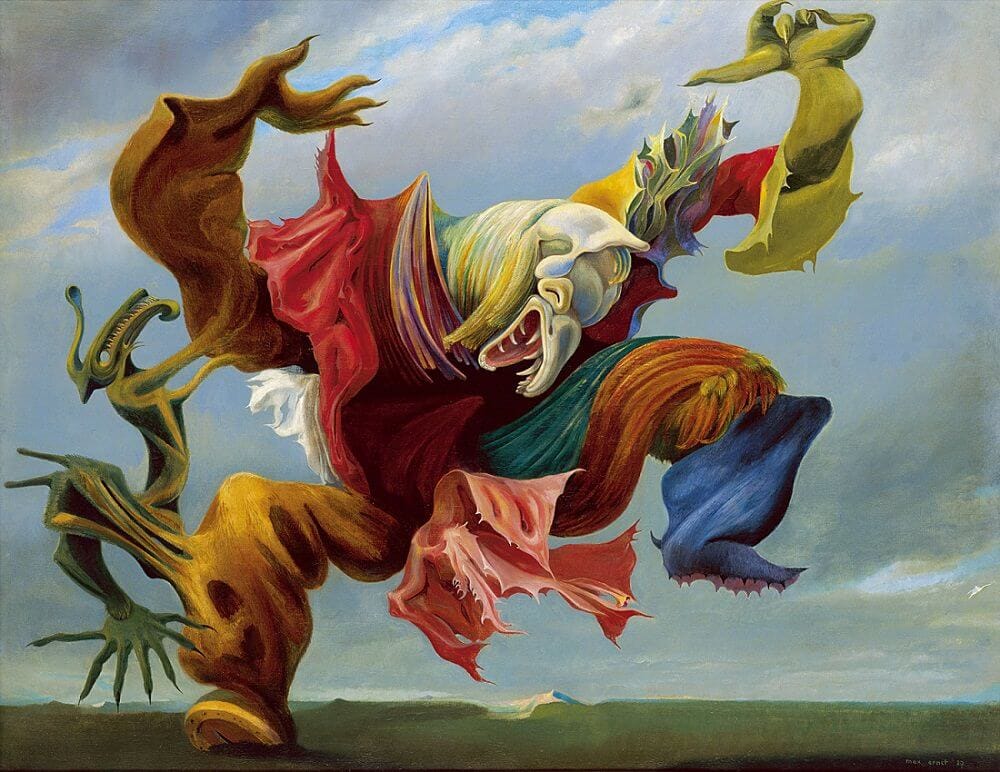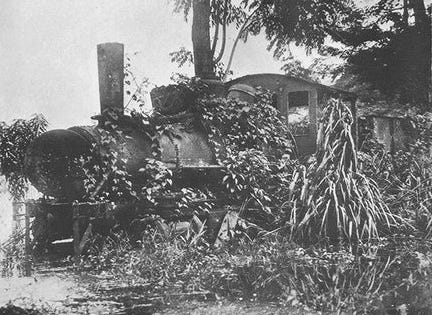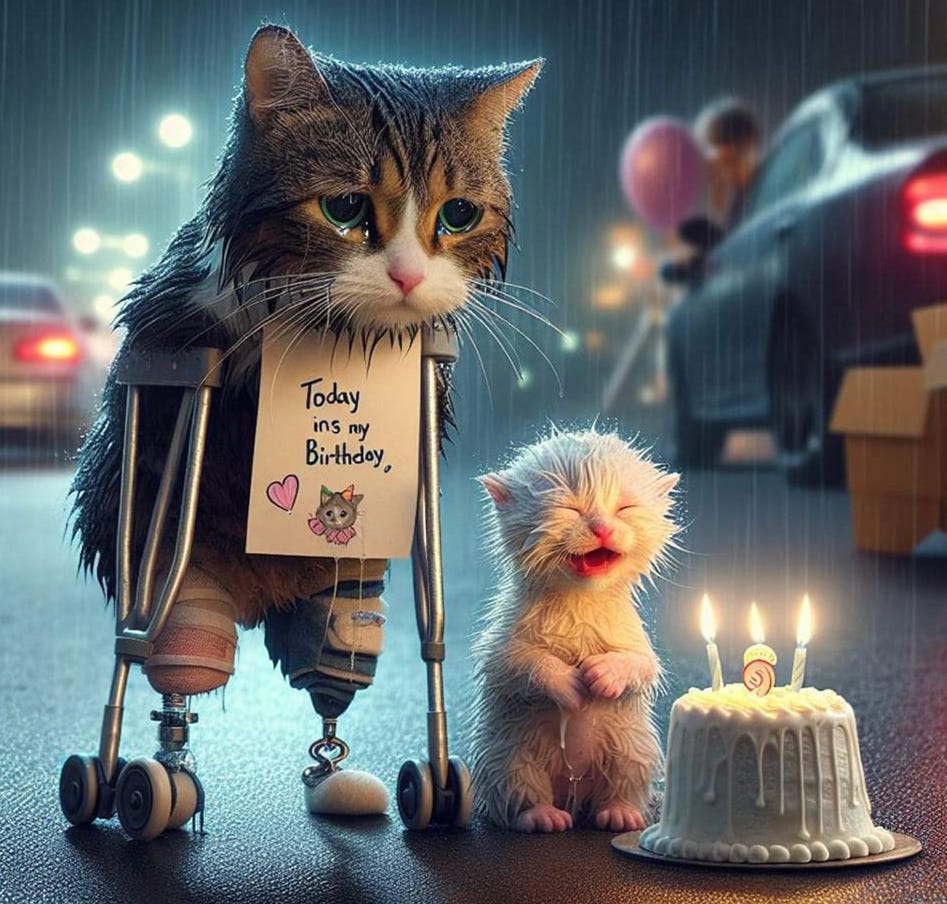The river
Content warning: disturbing images
Imagine a river. It flows from the highlands through a floodplain and into the sea. We’ll get back to those highlands in just a moment—they are vitally important—but for now let’s think of the river’s mouth, where it empties its water into the ocean. The river divides into two channels just before it finishes its course.
That river is romanticism. Romanticism, as a philosophical outlook and an art movement, is notoriously hard to define; it is also very much in the air right at this moment in history. Maybe it’s the fault of AI and the consequent scramble by the commentariat to discern what, exactly, is unique about human creativity. A few years ago I read an excellent three-part series of articles by the mononymous about that very issue;1 since then I have seen discussions of romanticism pop up all over the place, like fairy rings after a rain. There is even an online magazine, , dedicated to “a revival of romantic letters.” Romanticism is most certainly having some sort of moment. But what is romanticism, really?
To start, romanticism is not classicism or realism. That might sound obvious and boring but we have to pick our way through these sorts of definition-of-terms discussions quite carefully. Writing in Romanticon, defined romanticism as “pitting expansive imagination against all reductiveness,” realism as “committed to precision and mimesis even in the face of ugly fact,” and classicism as “concerned with orderly proportion and rational form.”2 Pistelli is not the first person to define romanticism in relation to classicism. None other than Johann Wolfgang von Goethe once said this: “classicism is health, romanticism is disease.” So who is right? Pistelli’s “expansive imagination” sounds like a good thing; Goethe’s disease does not. Could it be that some “diseased” mental states actually give us a better understanding of the world? When the whole world is sick, the healthy ones appear diseased? Hard to say. But I’m going to try to convince you that romanticism, when compared to a different artistic movement which will not yet be named, looks the picture of perfect health. By the way—those highlands I mentioned earlier? They are full of trolls. Remember that.
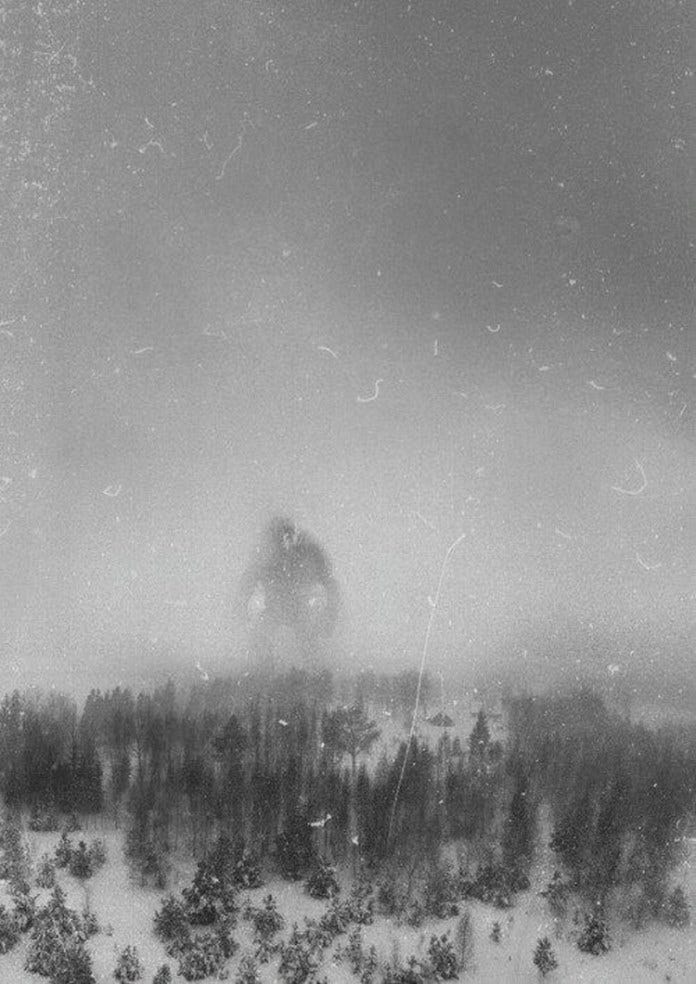
Classicism is the principle of categorization, of systematization; it is the concept of platonic forms. Realism is the principle of exact observation, of particulars. Both are attempts to understand reality with the intellect alone. Classicism lumps things together into bins. Realism splits things apart and notices the differences. Only romanticism accepts reality as it is without trying to understand it. Pistelli again: romanticism is “obsessed with the irrational depth of the inner life and with the way this inner life, the imagination, manifests itself outwardly, for better or for worse.”3 Romanticism is a humble and unobtrusive philosophy, in contrast to the hubris of classicism and the cynical detachment of realism. Realism is the anthropologist scribbling field notes. Classicism is a lecturing professor. Romanticism is the dutifully attentive student.
Romanticism is upstream of both classicism and realism. Societies have typically been born at the places where rivers meet bodies of water; classicism and realism had both been around for centuries before romanticism was ever conceived in the minds of a few late-eighteenth-century German poets. It was only in response to the pressures of the Enlightenment—when European thinkers began to dissect their metaphysics and systematically reject the spiritual aspects of reality in favor of the physical aspects—that romanticism was first articulated.
And if we go further up the river and into those highlands? The trolls up there are very, very ugly, but there are beautiful elves and fairies living there too. But let’s look again at the mouth of our river.
Both forks of the river of romanticism empty into the sea of modernism. For what other than modernism is the logical consequence of either the sorting and lumping impulse of classicism or the minute descriptiveness of realism? Both ideas have at their core a concept of “knowing” which prioritizes intellectual understanding; and modernism is the triumph of intellectualized reductiveness, the ultimate “we know” that has reverberated, with disastrous consequences for art and philosophy, throughout the twentieth century. It was modernism that gave us the atrocious “worker housing” of Le Corbusier and the Bauhaus—modernism which gave us the sterilized non-art of Pollock, Sol Lewitt, Bridget Riley. Modernism is eugenics, planned suburbs, social conditioning, the human anthill. Modernism gave us Francis Fukuyama’s absurd concept that late-twentieth-century humanity had reached “the end of history”—that all the problems had been solved, that we now knew the right way to go about building the perfect society. Sure is funny how reality has a way of checkmating the theorists! Who of the modernists would have guessed that our current day would embrace spiritualities of all imaginable types? The second quarter of the twenty-first century is set to demonstrate a full flowering of belief in the metaphysical, the religio-spiritual, the irrational, the emotional—beyond anything found in the environment which fostered the growth of the first iteration of romanticism.4
The flow of understanding always proceeds from blurriness to clarity, from darkness to light. This is simply the nature of knowledge as we travel downstream. But what if, instead of rushing towards the light, we stayed a while in the gloom? That is romanticism. It is a way of knowing which privileges the inexact, the not quite precise. Romanticism says “I don’t know something in its entirety but I do know a little bit about it . . . and that is enough.”
The river flows through the plains, meandering, twisting. One end of an oxbow can be seen from the other end, three miles downstream but only a hundred feet away in a straight line. This is the nature of romantic thought: leaps of logic, vague generalizations, theories built from unfounded hunches. This is how romanticism works and how artists have worked throughout history. Artists bring beauty into the world and always have; but beauty is a vague and irrational concept: it exists only in the eye of the beholder.
“But what about those highlands?” I hear an impatient reader say. Yes, yes; I promised we would get to them and now is the time. The highlands are the logical outcome of romanticist thinking. They are surrealism. Romanticism might seem wild and transgressive but that is only because it appears so when compared to its classicist antecedents. If romanticism is the ego straining to assert itself, classicism and realism are the superego putting limits on what can and can’t be done. But surrealism is the id. It is the absolutely and completely unfettered examination of irrationality which romanticism only pretends to be. Romanticism is health; Surrealism, disease.
Romanticism is the journey from irrationality and blurriness to rationality and clarity—but it is only the journey, not its starting and ending points. Romanticism is the evening twilight of conjecture. Classicism is the sunlight, and realism is going inside and turning the lights on. Romanticism is being awakened at night and wondering what woke you up. Surrealism is fantasizing that it was a monster. At night the thing hanging from your doorknob could be anything. Classicism says “it’s just a jacket.” realism says “it’s just your jacket,” and goes back to sleep. Romanticism puzzles about what the shape might be. Surrealism deliberately tries to get the shape into its nightmares.

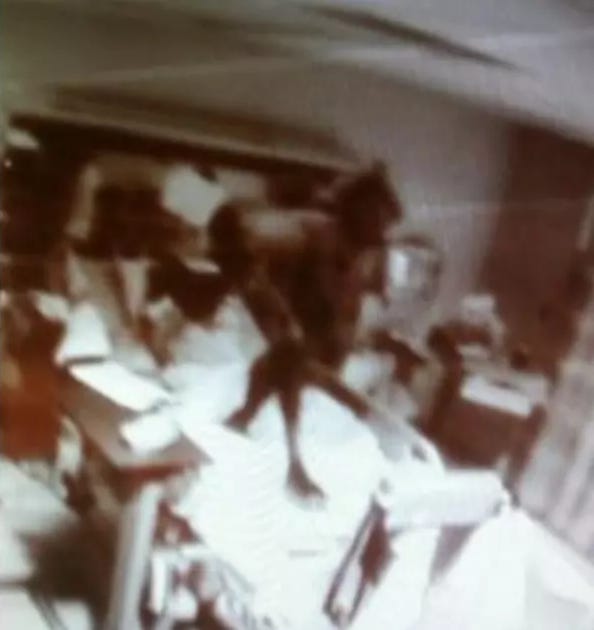
Surrealism revels in odd juxtapositions. For romanticism, there are no odd juxtapositions at all; romanticism echoes the sentiment of André Breton that “the mind is wonderfully apt at grasping the most tenuous relation that can exist between two objects taken at random, and poets know that they can always, without fear of being mistaken, say of one thing that it is like another.” Surrealism, however, would rather move away from that sort of analysis. Surrealism says it is better when two things are presented next to each other without the romantic poet’s meaning-making simile. The original group of surrealist artists operating out of Paris in the 1920s were fascinated by a line from Isidore Ducassee’s The Songs of Maldoror about “the chance juxtaposition of a sewing machine and an umbrella on a dissecting table.” Later they were enamored of a photo of a locomotive overcome with jungle vegetation, which they put into an issue of Minotaure, the surrealist magazine. These are the kinds of bizarre and unexplainable juxtapositions that surrealism prefers.
The vanguard of surrealist methodology today is in postmodern mashup culture. A Neil Cicierega mashup doesn’t offer any explanations for its existence; it just is. Other kinds of art dare to go even deeper into the mountains of surrealism, even further in pursuit of irrational extremes. Vaporwave, with its recontextualization of the sonic landscape of the late twentieth century into a fetishization of nostalgia, is just as irrational as the works of the original surrealists. Creepypasta, with its delving into the secret unknown springs of our deepest fears, is a direct linear descendant of the stranger works of Ernst, Bellmer, or Miro (but, notably, with the sexual element removed). Both exhibit the same cultivation of irrationality that characterized the high surrealism of the twenties and thirties. And we could go even further. Back of surrealism are artistic directions where human agency is dissolved into pure randomness and meaninglessness. AI art generators promise a quick way into the deep unconscious of our collective cultural image-memory, but they do so without communicating the thoughts of any human mind. Psychedelics also disengage the human mind from the artistic process: their use generates stunning and memorable imagery but who is really making the choices? Who is really in charge? That is the danger lurking among the snowy heights of the mountains beyond surrealism—they offer art without thought.
None of this matters, of course, except in the context of how art is used to communicate. In what ways will artists use the tools of romanticism, surrealism, classicism, realism, and modernism to get their point across?
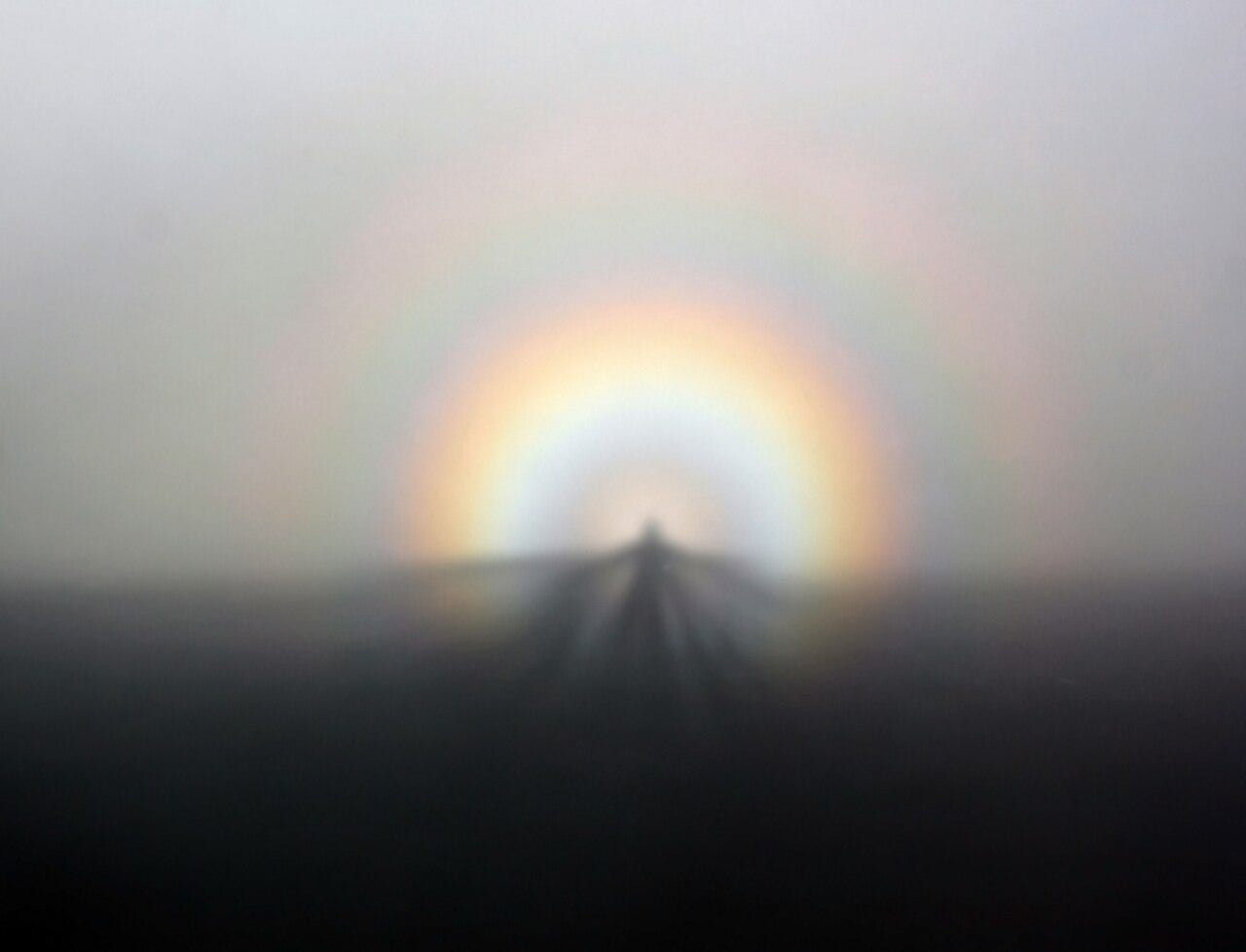
mentions, in one of his books somewhere, a time when he visited an art student who had made numerous pictures of some sort of heart-like object which obviously had an intense and personal significance for him; the student’s art was incomprehensible to anyone—including himself—so he languished and ultimately failed in his artistic aims.5 That is the danger faced by all artists at all times: that their unique vision is liable to become the babblings of an idiot unless it is built on some sort of framework which positions it within the broader array of cultural signifiers. Without a common language no two people can ever communicate—and without a common set of symbols or a meaning-extractive critical-historical practice, no artist can reasonably expect their art to achieve whatever communicative goals the artist sets for it.
Classicism is the deep bedrock on which all these frameworks of communication are founded; but surrealism is where the artists actually get their visions. And romanticism is the means by which these visions are realized in art. After long and harrowing journeys among the mountains we have come back down to the plain; only romanticism connects the two extremes of hyperintellectualized modernism and ultra-esoteric bizarrerie at the fringes of surrealism. Romanticism is at once an embrace of the irrational and a critique of it.
Romanticist artists, paddling along the river, picking out a metaphor here, lazily imbibing an emotion there, will thereby will save the world—the world of art, at least in this observer’s imagination.
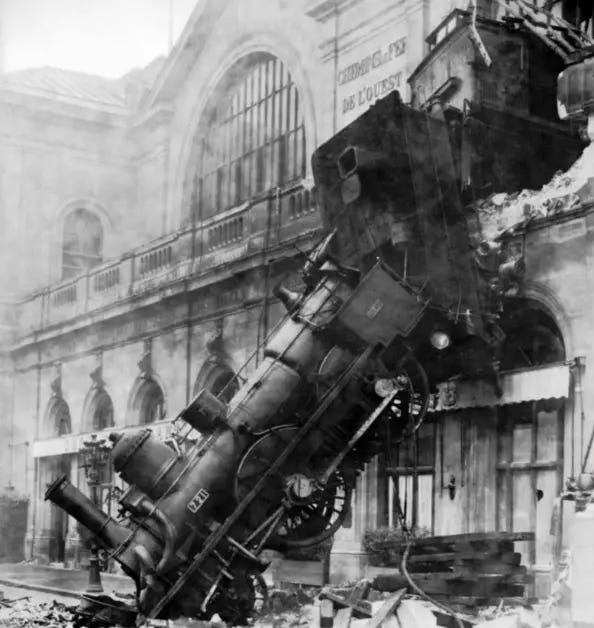
Links to part one, part two and part three.
John Pistelli, “I Come in Self-Annihilation: on the Romantic Temperament,” Romanticon, Sept. 7, 2025.
ibid.
The book to read on this subject is Strange Rites: new Religions for a Godless World by .
The story can be found in Elkins’ On the Strange Place of Religion in Contemporary Art.


